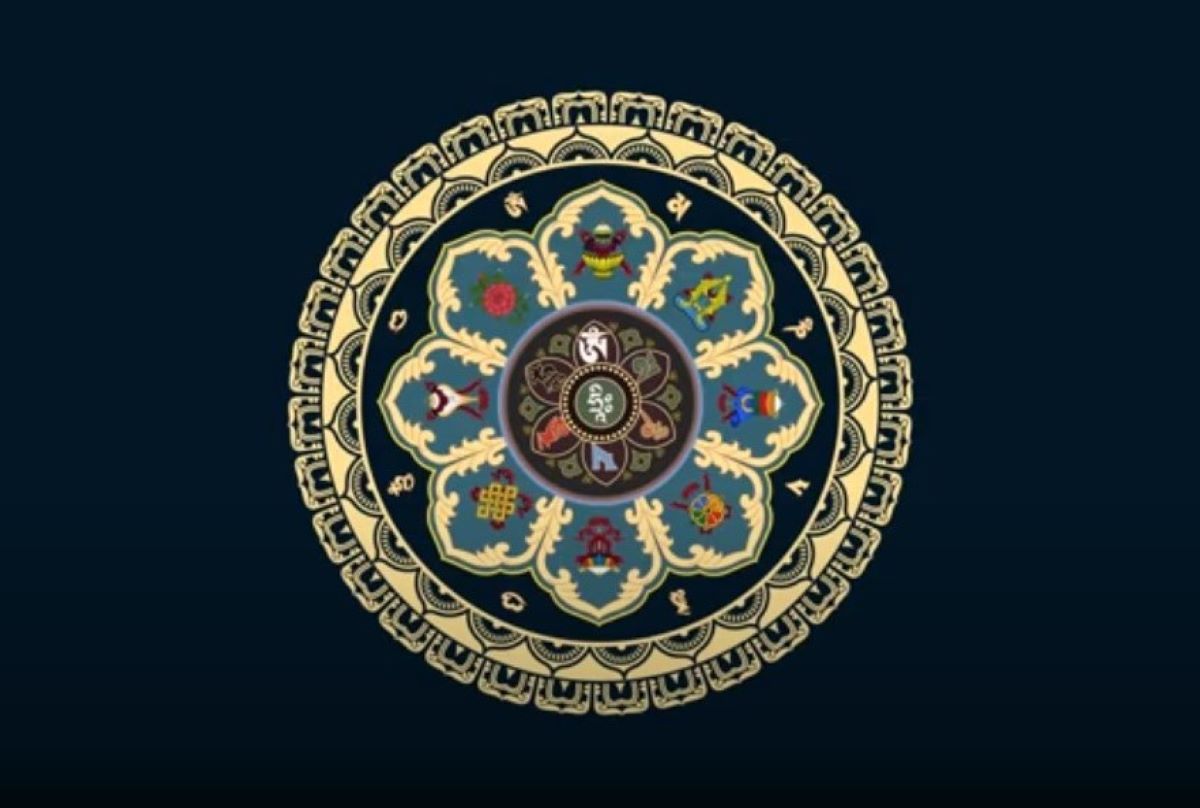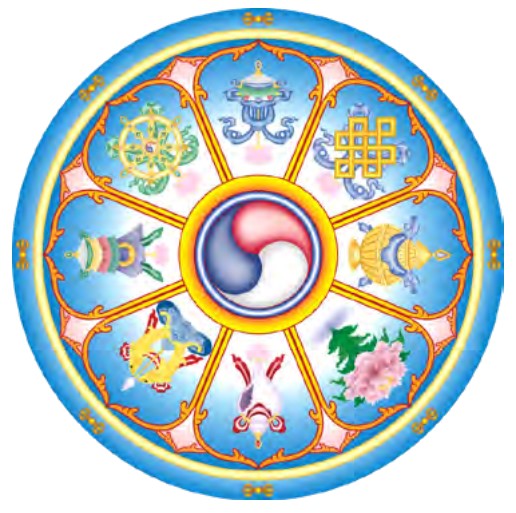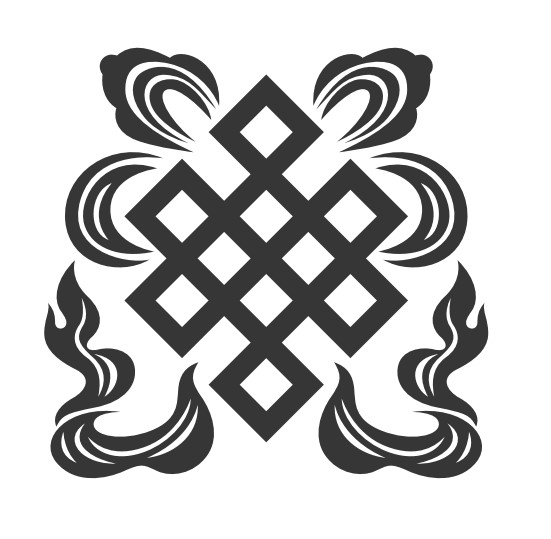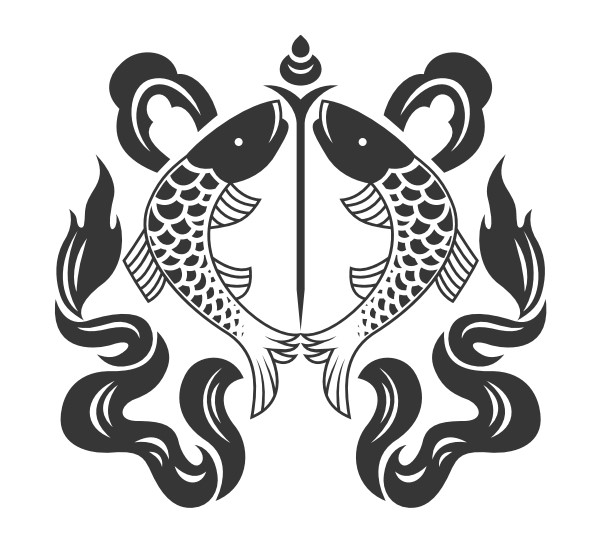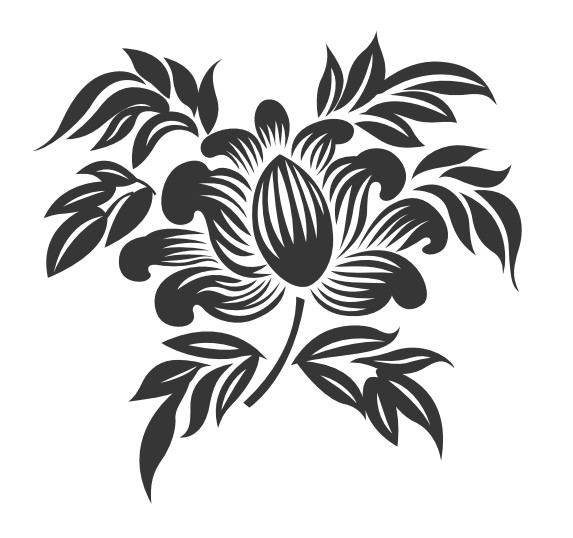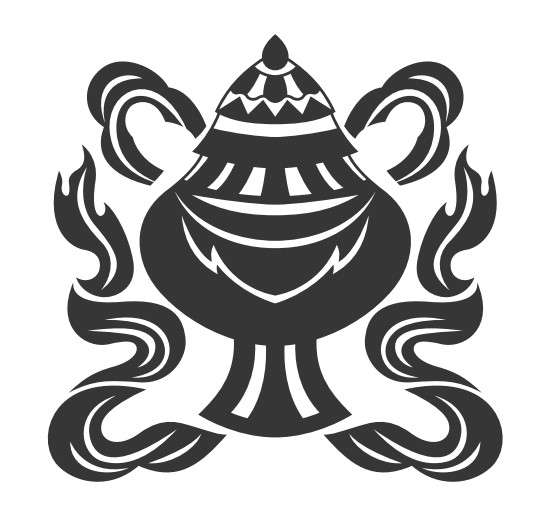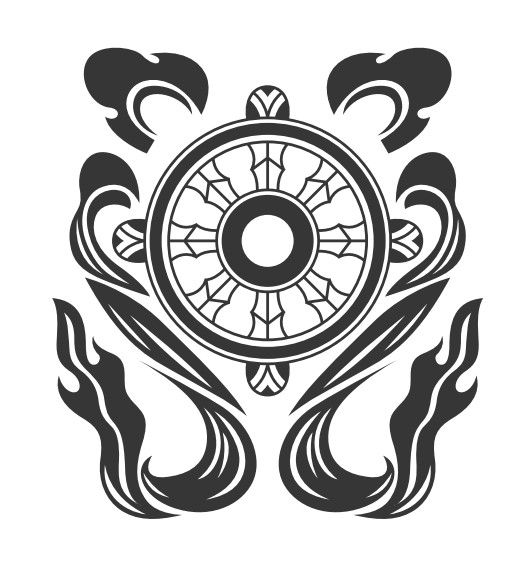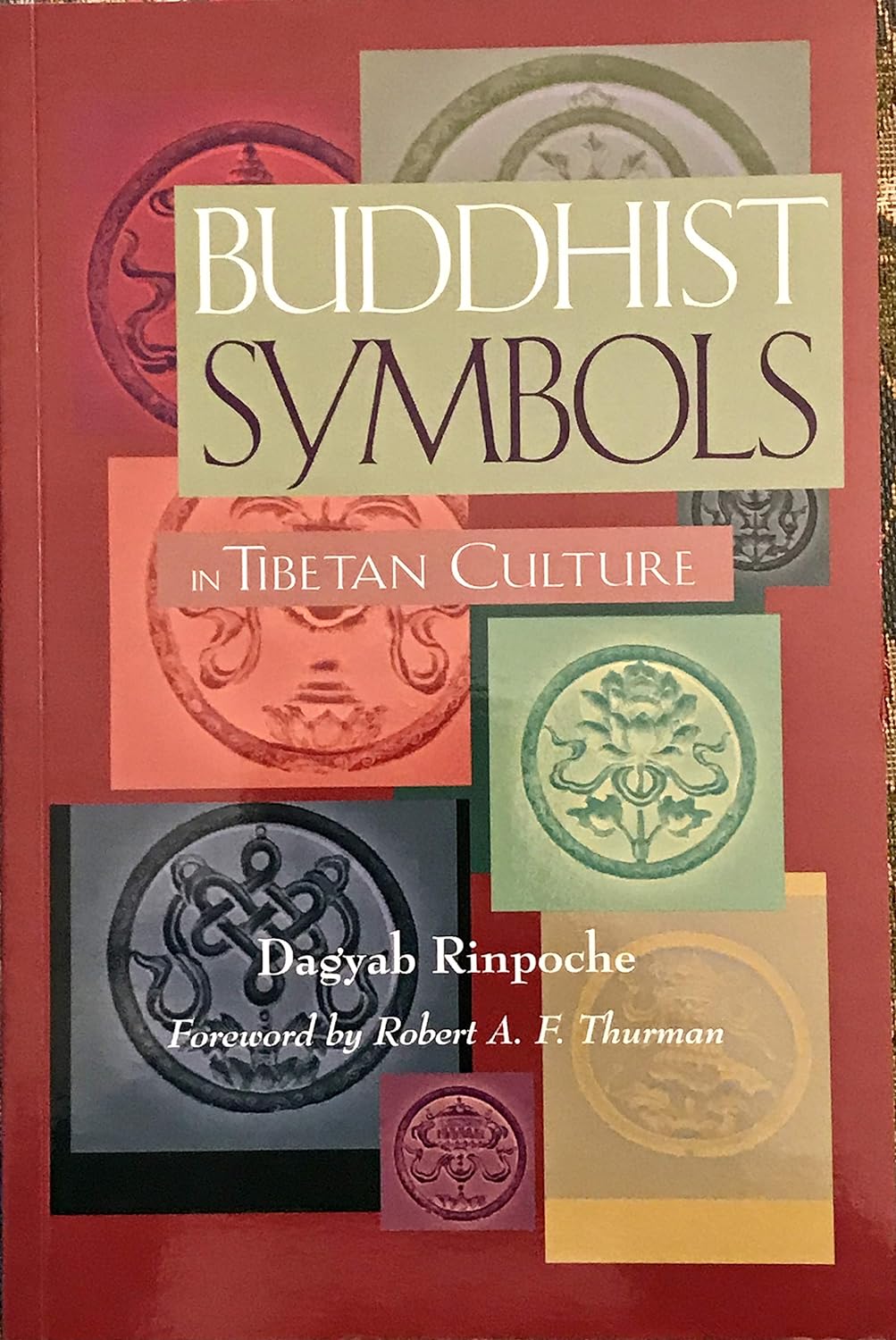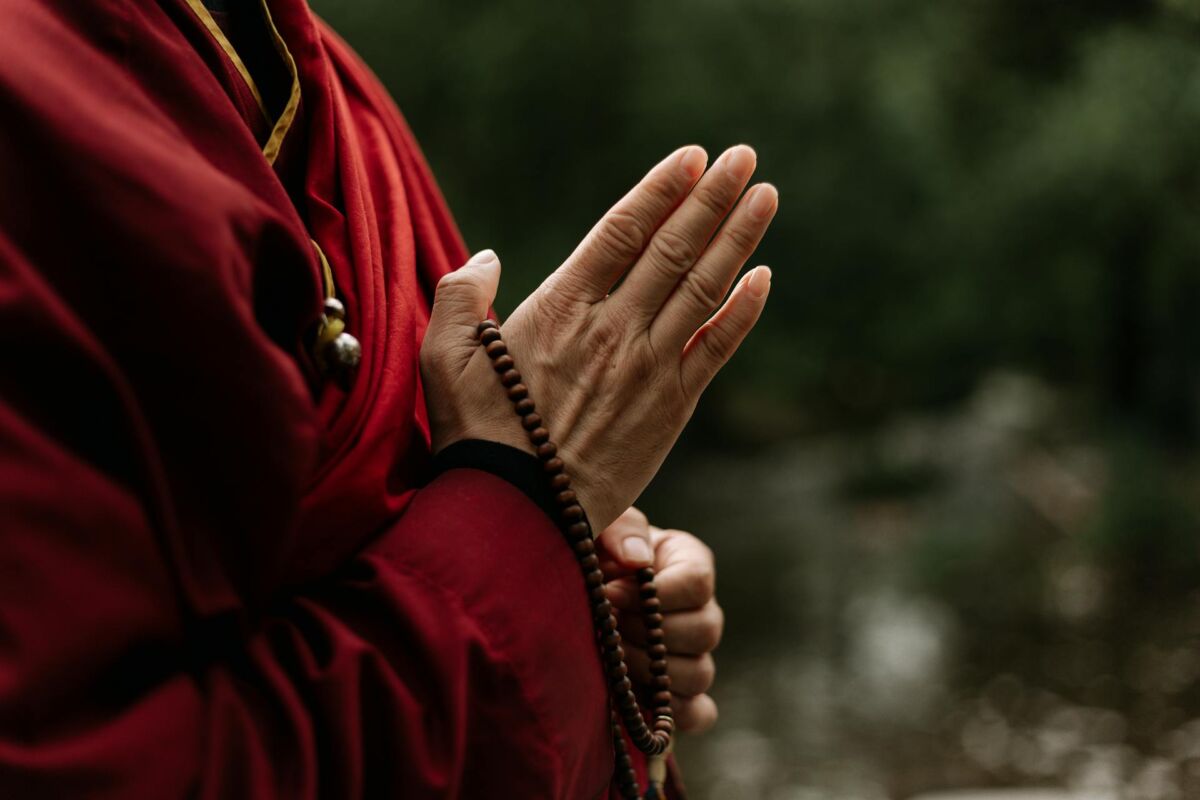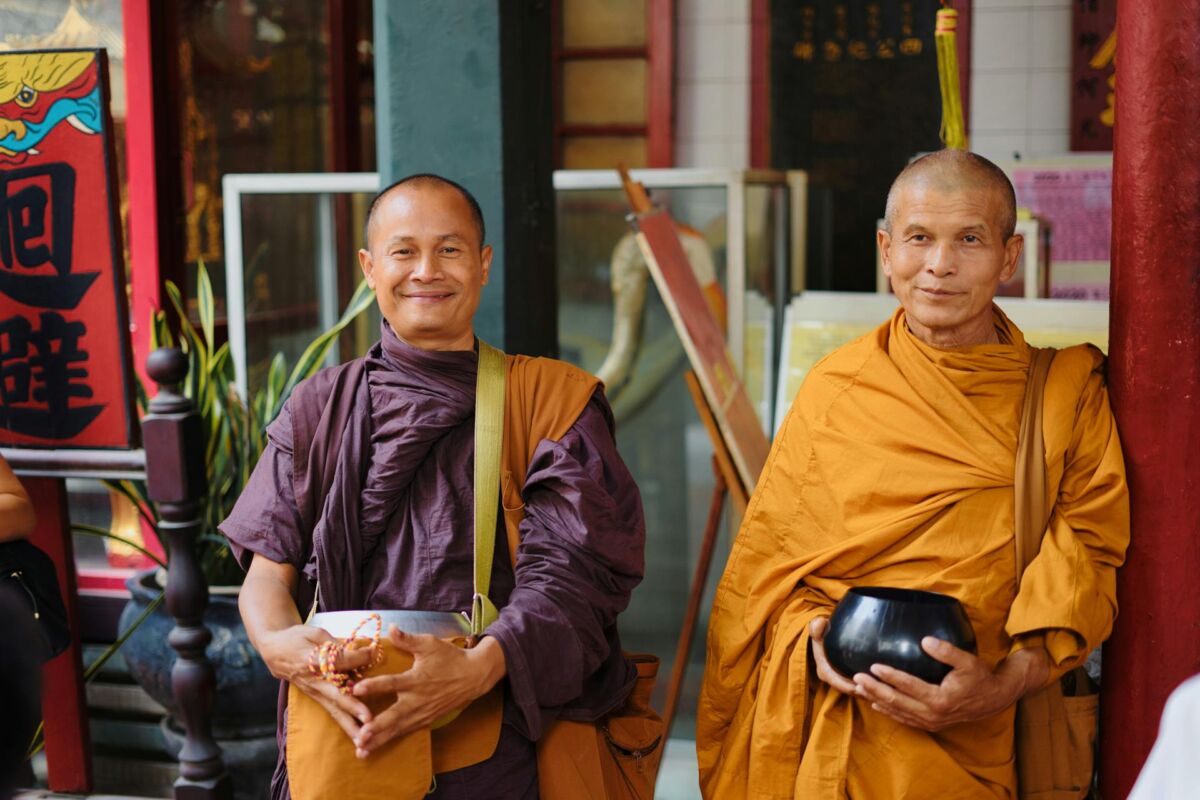Are you seeking information about the 8 traditional Buddhist symbols, also known as Ashtamangala?
These eight symbols represent the offerings made by the gods to Shakyamuni Buddha immediately after he gained enlightenment.
The exact origin of the eight Buddhist symbols is unknown, but it’s generally believed that they are based on Indian traditions predating the Buddha’s life. Some Buddhist scholars believe that Ashtamangala, the eight auspicious symbols, reflects the eight items the Indian Brahmin priests offered the Buddha following his passing into Nirvana.
The wheel depicted here illustrates the eight auspicious symbols. Starting from the top and moving clockwise, the eight symbols are the parasol or umbrella, the infinity knot, the treasure vase or “pumpa,” the lotus flower, the conch shell, the two golden fish, the victory banner, and the Dharma wheel (Dharmachakra).
1. Conch
The conch represents the sound of the Dharma, which awakens disciples from the deep slumber of ignorance and urges them to accomplish their own welfare and the welfare of others.

FREE Self-Test: How Spiritual Are You?
2. Endless Knot
The endless knot is a symbol of eternity and unity. It is believed that the endless looping of the designs confused evil spirits and prevented them from entering homes.
The infinity knot is also believed to be a symbol of the Buddha’s mind. It represents endless wisdom and compassion and can also symbolize the continuity of the 12 Links of Dependent Origination. The intertwining lines of the eternal knot symbolize how everything is connected.
3. Golden Fish
The golden fish represent joy, freedom, and fearlessness. They symbolize happiness as they have complete freedom of movement in the water.
Historically, they also symbolize the Ganges and Yamuna rivers. Over time, they have become symbolic of good fortune or good luck. They also symbolize how one with courage and fearlessness may face the ocean of suffering and may choose their rebirth just as fish swim freely through water.
4. Lotus
The lotus flower represents the primordial purity of body, speech, and mind, floating above the muddy waters of attachment and desire.
In Buddhism, the lotus has been used in many teachings to impart the true nature of all mankind. While the roots of the lotus flower are found deep in the mud, below the murky water of a pond or a lake, it still grows above the water and blossoms into a beautiful, sweet-smelling flower.
The lotus is representative of how one may rise from suffering to reach enlightenment, beauty, and clarity. The lotus can appear in several colors, each with its own meaning: white symbolizes spiritual and mental purity, pink symbolizes the traditional Buddha, purple is for mysticism, red symbolizes love and compassion, while blue symbolizes wisdom.
5. Parasol
The parasol symbolizes the protection of beings from harmful forces and illness. The canopy symbolizes preservation against suffering and sorrow.
In Buddhism, the parasol symbolizes the protection the Dharma gives one from distress and confusion caused by our samsaric lives and the burning heat of our emotions. Even though we may not be fully awakened, when we seek refuge in the Buddha, Dharma, and Sangha, we begin to find ease beneath the shelter of the parasol.
It is usually depicted with a dome, representing wisdom, and a “skirt” around the dome, representing compassion. Sometimes, the dome is octagonal, representing the Eightfold Path. In other uses, it is square, representing the four directional quarters.
6. Treasure Vase
The treasure vase, or “pumpa,” represents health, longevity, wealth, prosperity, wisdom, and the phenomenon of space.
In Buddhism, each person is a sacred receptacle, a vessel that can be filled with the riches of wisdom and compassion. It may also symbolize the treasures of health, wealth, prosperity, and all the good things that come with enlightenment.
It is also a reminder of the potential of following the Buddha’s teachings. From mindfulness and concentration to compassion and loving-kindness, these are some of the many gifts and treasures that come from practicing the Dharma.
7. Dharma Wheel
The Dharma wheel (Dharmachakra) is a symbol common to several Indian religions, including Jainism, Hinduism, and Buddhism. Historically, the Dharmachakra was often used to adorn Buddhist temples, statues, and inscriptions, from the earliest period of Indian Buddhism to today.
In Buddhism, the Dharmachakra represents the eightfold path leading to enlightenment: right faith, right intention, right speech, right action, right livelihood, right endeavor, right mindfulness, and right meditation.
8. Victory Banner
The victory banner represents the victory of the Dharma over fear, ignorance, and death. It also symbolizes the Buddha’s victory over Mara, the Lord of Illusion, preceding his enlightenment.
In Tibetan Buddhism, victory banners symbolize enlightenment. They symbolize the victory of humans over the enemies of delusion and ignorance.
In Conclusion

FREE mindfulness resources for stress relief
If you want to dive deeper into eight traditional Buddhist symbols, you can’t go wrong with Buddhist Symbols in Tibetan Culture by Dagyab Rinpoche. Complement with our articles on the Four Noble Truths and Noble Eightfold Path.
I’m a freelance writer and mindfulness advocate behind this blog. I started my meditation practice in 2014, and in 2017 I launched this website to share what I learn with others. Here are the three things you can do here:
1. Schedule a free consult if you want to learn Buddhist meditation.
2. Download free mindfulness resources for stress relief
3. Join Patreon for exclusive content and community meetings.

